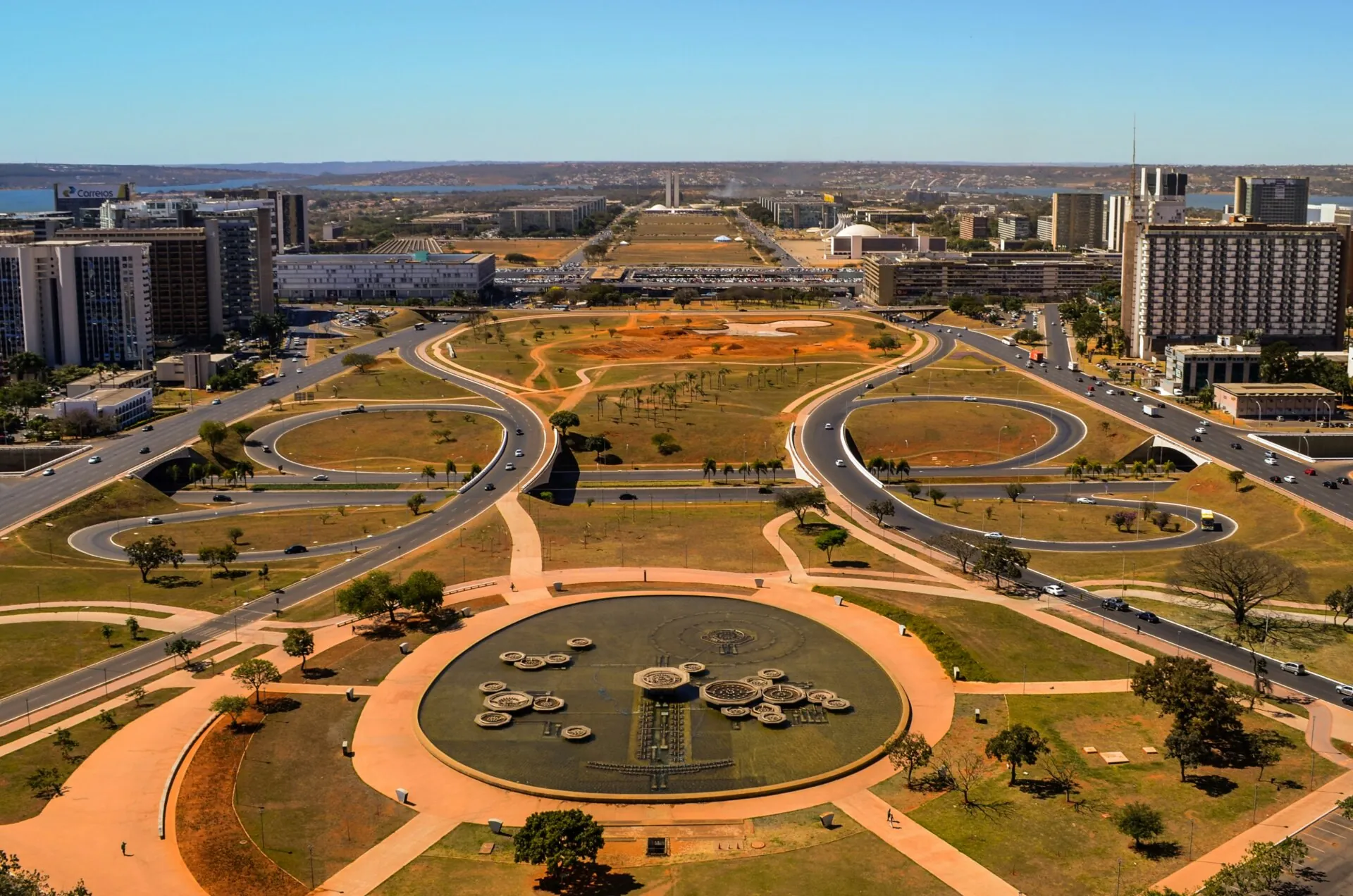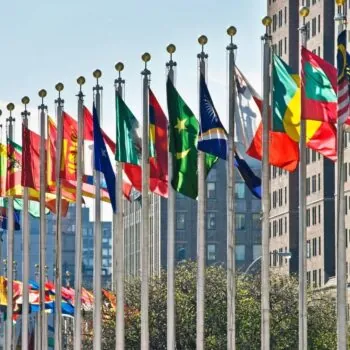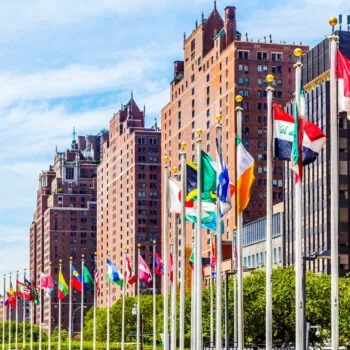The Pre-COP takes place on 13-14 October in Brasília and will be the final key diplomatic moment to build consensus on key issues ahead of COP30 in Belém. This is also the moment that clear signals should and must be given on the shape of the final outcomes package that the Brazilian Presidency expects to see at COP30.
From UNGA to COP
It was encouraging that at September’s UN General Assembly, the vast majority of countries spoke strongly in defence of multilateralism, recognising international cooperation as essential to tackling climate change, inequality, and wider ongoing crises. Yet, despite commitment to hold the line and defend climate action, the scale of concrete commitments on climate to date falls short of what is needed to meet the goals of the Paris Agreement. The High-Level Climate Action Summit, held in the margins of UNGA, witnessed several leaders come out in defense of climate action.
In terms of submissions of Nationally Determined Contributions (NDCs), a wide gap still remains. Current pledges are out of step with the economic forces driving the transition, and major gaps persist in adaptation, mitigation, and finance for developing countries, particularly the most vulnerable. The upcoming NDC Synthesis report will likely show we are significantly off track to reach the 1.5°C goal; incremental progress is being made, but much more transformational action is needed in most of the major economies.
While real-world progress on the transition is accelerating in some sectors and regions, political momentum is faltering, and the pace of change remains uneven and inequitable. Persistent barriers continue to exist: while the climate community and private sector both recognise the need for investment in adaptation and mitigation, differences in how they assess climate and financial risks and what constitutes an acceptable return make it difficult to unlock the scale of finance needed in emerging markets and developing economies. Constraints on funding and conflicting priorities faced by donor countries against a backdrop of heightened geopolitical tensions make the task doubly challenging. Even as momentum around renewables rollout continues to accelerate at pace, we know that more is needed to curb emissions and keep Paris within reach. The multilateral climate process has delivered real progress: before the Paris Agreement, the world was heading for over 4°C of warming; now projections are around 2.7°C. This is a major improvement, but still short of the Paris goals. COP30 will be pivotal to protecting progress, accelerating action, and building a system fit for the future. The Pre-COP is a crucial milestone on the road to COP30, offering ministers and negotiators a chance to align on priority outcomes, demonstrate political commitment, and set the tone for Belem.
The COP30 Outcomes Package
At COP30, a coherent package that combines immediate action with clear long-term pathways must come to the fore. This should encompass commitments on finance, decarbonisation, resilience and governance simultaneously. It is critical that all elements are featured in order for the package to work and meet the varied demands of both developing and developed countries. COP30 should begin and conclude with clear, unifying signals at the highest levels that the Paris Agreement has delivered, is functioning, but that there are real gaps that must be closed. The outcome must demonstrate a strong commitment to delivering on actions that protect progress on multilateral climate collaboration while closing the gaps on emissions, finance, adaptation, nature, and governance – providing a coherent framework to guide the coming decade of climate action.
Critical elements required to address the ambition gap are explored below in more detail:
Addressing the emissions gap
Governments must present credible steps for raising ambition beyond their current nationally-determined commitments to keep the Paris temperature limitation goal within reach. This would position the 2035 NDCs as the floor, not the ceiling, of ambition, and set out a plan to exceed existing targets through real-world implementation and accelerated sectoral action. This plan should be carried forward by the COP30 and incoming COP31 presidencies, and be reported on and reviewed annually, starting at COP31.
A credible COP30 outcome will also depend on strong political and real-world signals from coalitions of countries, businesses, and financial institutions. A high-level political moment at the World Leaders’ Summit, championed by a diverse coalition of countries and building on the EU-coordinated joint letter launched during UNGA, can serve as a rallying point for accelerated energy transition delivery. A global and inclusive High-Level Dialogue on the Transition Away from Fossil Fuels could provide a structured space for countries and non-state actors to explore global transition pathways, develop country-specific roadmaps, address economic and social challenges, and identify the support needed to accelerate the transition.
Further country commitments under the Action Agenda Activation Groups would strengthen delivery of the Global Stocktake outcomes to triple renewables, double energy efficiency and transition away from fossil fuels. Meanwhile, new partnership announcements, such as through the Global Clean Power Alliance or Global Energy Transition Forum, could demonstrate progress on mobilising both public and private finance across the developing and developed world. Linking these explicitly to the Baku-to-Belém Roadmap will be a tangible mark to demonstrate actions aimed at accelerating energy transitions across economies.
In terms of negotiations, a strong outcome on the Just Transition Work Programme (JTWP) will be needed that establishes a clear just transition action mechanism connected to the clean energy transition. This mechanism should include specific provisions for supporting just energy transitions at the country and sectoral level, ensuring that ambition is matched with fairness, inclusivity, and tangible delivery on the ground.
Closing the finance gap
Finance is at the heart of closing the climate ambition gap to ensure that financial commitments are translating into real-world action and can also be scaled to meet the decade’s climate goals.
At COP30, a credible Baku-to-Belém Roadmap must be presented and endorsed by countries. The Roadmap should demonstrate clear approaches around public and private financing, including how innovative sources of finance such as levies or Carbon Border Adjustment Mechanism revenues, accountability mechanisms, fiscal space expansion, private capital mobilisation, and reforms to multilateral development banks will be deployed. Donor countries with expiring climate finance targets must step forward with renewed pledges and concrete plans to scale up climate finance over the next decade, including support for adaptation and nature-based solutions.
A credible COP30 outcome will also require visible demonstrations of finance in action. This includes launching initiatives such as a capitalised Tropical Forests Forever Facility, rolling out Country Platforms, showcasing private sector contributions under the Action Agenda, and progress toward aligning financial flows with Article 2.1(c). Institutionalising a Circle of Finance Ministers would establish a permanent public–private forum connecting governments, investors, and civil society to coordinate finance for climate action.
Negotiations must secure sufficient space to address Article 9 and related tensions around provision of climate finance by developed countries while advancing mechanisms under Article 2.1(c) to track alignment of both public and private financial flows with climate goals. These outcomes will help ensure COP30 delivers a credible framework for sustained, scaled, and transparent climate finance, reinforcing both mitigation and adaptation ambitions.
Closing the adaptation and resilience gap
Adaptation is central to Brazil’s COP vision and an essential area of increased focus to address rapidly mounting climate impacts. Success at COP30 will depend on visible political commitment, coordinated finance, and practical pathways to implement adaptation measures.
To provide those signals, both the pre-COP and the World Leaders Summit must underscore adaptation as integral to economic and climate resilience. New adaptation finance pledges will be needed, and support for replenishing the Adaptation Fund and the Fund for Responding to Loss and Damage is vital. There must also be signals of intent to agree on a path forward for adaptation finance, including how to address the expiration of the goal put forward by developed countries at COP26 in Glasgow to double the provision of adaptation finance by 2025. Adaptation finance should be explicitly integrated into the Baku-to-Belém Roadmap, demonstrating its role alongside mitigation and investment goals.
A broadened group of actors committed to adaptation could demonstrate leadership on adaptation including around finance, involving key players including China, the EU, Australia, SIDS, African countries, and Brazil, with both climate and finance ministers engaged. The Action Agenda can showcase scalable initiatives, from insurance pools, Country Platforms and anticipatory finance to nature-based solutions, while collaboration with MDBs should be highlighted as a mechanism to unlock further adaptation finance.
Negotiations must secure early consensus on the Global Goal on Adaptation by endorsing a clear, manageable set of indicators, including means of implementation, to guide adaptation preparedness. These indicators should capture socio-economic resilience and security benefits, linking directly to the second Global Stocktake and ensuring that adaptation progress is measurable, transparent, and investable.
Closing the nature, food and poverty gap
Nature, sustainable, and just food systems are central to global stability, poverty eradication and the Paris goals, and embedding nature and food systems transformation across the COP30 finance package, including the Baku – Belem Roadmap, will be important. The launch of a Tropical Forests Forever Facility, with high integrity investment criteria, strong initial sponsor capital, a clear pathway to reaching the full initial capitalisation of the fund within a defined timeframe, high environmental safeguards and prioritisation of the rights of Indigenous Peoples and Local Communities, would likewise signal real progress on forest protection. COP30 should also deliver a decision to strengthen synergies across the Rio Conventions, ensuring coherent action for climate, biodiversity, and land degradation.
In terms of negotiations, advancing implementation of the GST1 goal to halt and reverse deforestation by 2030, and embed strong, implementable indicators on nature and food systems in the Global Goal on Adaptation will be important
Closing the credibility and governance gap
Strengthening governance and accountability is a huge opportunity at COP30 to help not only build on what has worked but to guide the Paris regime’s evolution to meet the implementation and delivery decade. Advances at COP30 will therefore be critical in creating that buy-in and approach which can carry forward into COP31 and beyond. To support this process, governments should table proposals at COP30 for a future regime capable of delivering on 1.5°C and resilience goals, including a roadmap for action beyond COP30. This might take the form of an upgraded UNFCCC accountability framework to track delivery on NDCs, adaptation, finance, fossil fuel transition, and energy system changes, complemented by a global implementation dashboard. Integrating climate science more firmly into decision-making through national climate councils, aligned IPCC reporting, and injecting more real-time data and early warning systems will additionally strengthen credibility and connect governance to tangible outcomes.
More generally, there is a critical need for the UNFCCC to better convey, support, and elevate real world action at COP moments, alongside progress in negotiations, which only tells part of the story. The Action Agenda can be strengthened and leveraged as COP30’s “implementation engine,” bridging negotiated outcomes with high-impact action. This includes showcasing coalitions of governments, non-state actors, and international organisations who are delivering results at scale. Expanding the remit of High-Level Champions and providing platforms for ambitious policies ensures that real-world action across finance, energy, nature and adaptation is visible, coordinated, and credible.
Mechanisms to foster discussion across the Action Agenda space, including for example Brazilian Climate and Trade Forum could be advanced. And UNFCCC procedural reforms, including enhanced transparency, strengthened decision-making, and integration of science, should also be tabled to ensure the regime is fit for the next decade. Collectively, these measures will signal that COP30 is committed to both robust governance and tangible delivery.
The world is at a critical moment to demonstrate that the multilateral climate regime can deliver results in this decisive decade. The Pre-COP in Brasilia offers the chance to set the tone, build consensus, and ensure that when Parties gather in Belém, COP30 emerges as the genuine turning point for climate action that the world needs.


